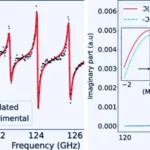A groundbreaking study led by Chibuisi Chinasaokwu Okorieimoh and colleagues from Technological University Dublin and University College Cork has unveiled a novel methodology to dissect the multifaceted dynamics influencing the performance of photovoltaic (PV) systems. Published in MDPI Electricity, the research sheds light on disentangling longer-term trends from seasonal variations in measured Photovoltaic system performance, offering valuable insights for optimizing solar energy utilization.
Photovoltaic systems play a pivotal role in renewable energy generation, yet their performance is subject to intricate interactions between long-term trends and seasonal fluctuations. The researchers developed a sophisticated analytical framework combining time series and statistical techniques to address this complexity. This framework was applied to five-year comprehensive datasets, allowing for a meticulous examination of the distinct contributions of longer-term trends and seasonal effects.
The study’s findings provide a nuanced understanding of Photovoltaic system performance, highlighting significant trends indicative of degradation, maintenance, and weather variations. The research underscores the importance of proactive maintenance strategies to mitigate degradation effects and optimize system efficiency.
Moreover, the study quantifies the impact of changing weather patterns on Photovoltaic system performance, offering recommendations for enhancing efficiency based on seasonally varying conditions. The research empowers stakeholders to make informed decisions for system optimization in residential and commercial settings by deciphering the underlying drivers of performance fluctuations.
The discussion surrounding the methodology delves into the intricacies of separating longer-term trends from seasonal variations, emphasizing the significance of understanding these components for comprehensive performance analysis. The study highlights the efficacy of adjustments utilizing average annual cell temperature in rectifying performance ratios, demonstrating a marked enhancement in Photovoltaic system performance following temperature correction. This investigation encompassed 95%, 90%, and 99% confidence intervals (CI) alongside significance levels of 0.05, 0.10, and 0.01.
This pioneering research advances our understanding of the intricate variations within Photovoltaic system performance and provides practical guidance for enhancing the sustainability and effectiveness of solar energy utilization. With solar energy poised to play an increasingly prominent role in the global energy landscape, insights from this study are invaluable for driving innovation and maximizing the potential of photovoltaic technology.










